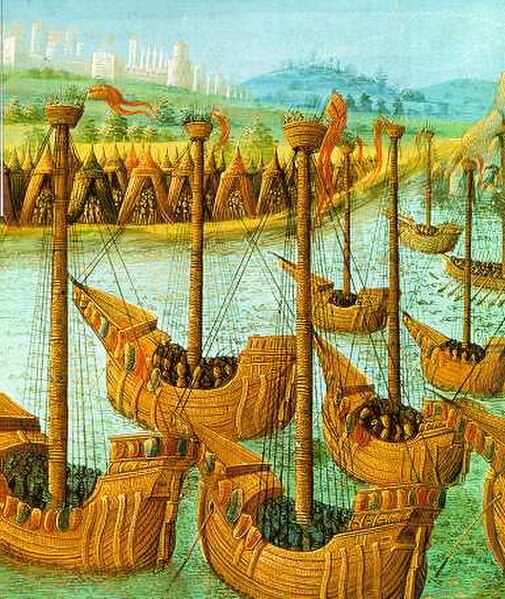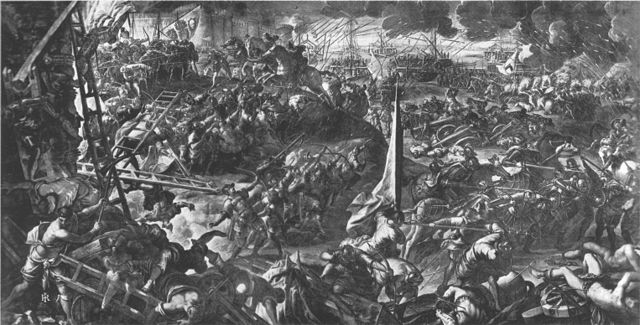The Bulgarian–Latin wars were a series of conflicts between the Second Bulgarian Empire (1185–1396) and the Latin Empire (1204–61). The wars affected the northern border of the Latin Empire throughout its existence.
Boniface of Montferrat elected leader of the Fourth Crusade and eventual king of Thessalonica before his death by the Bulgarian King Kaloyan
The Fourth Crusade (1202–1204) was a Latin Christian armed expedition called by Pope Innocent III. The stated intent of the expedition was to recapture the Muslim-controlled city of Jerusalem, by first defeating the powerful Egyptian Ayyubid Sultanate. However, a sequence of economic and political events culminated in the Crusader army's 1202 siege of Zara and the 1204 sack of Constantinople, rather than the conquest of Egypt as originally planned. This led to the Partitio terrarum imperii Romaniae or the partition of the Byzantine Empire by the Crusaders and their Venetian allies leading to a period known as Frankokratia, or "Rule of the Franks" in Greek.
A 15th-century miniature depicting the conquest of Constantinople by the Crusaders in 1204
Venetian Navy landing in Constantinople, from a XV Century miniature
The crusaders conquering the City of Zadar, painted by Tintoretto
Dandolo Preaching the Crusade by Gustave Doré





